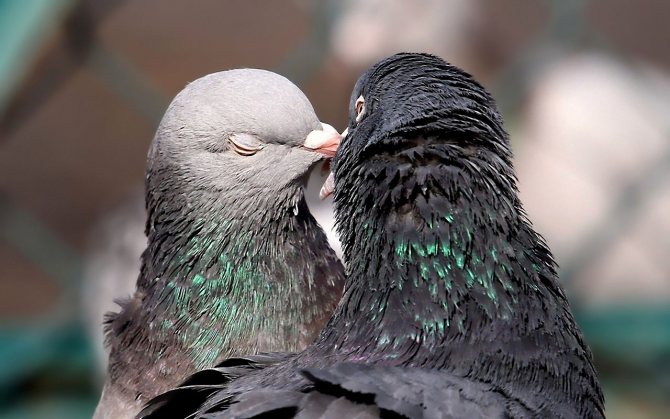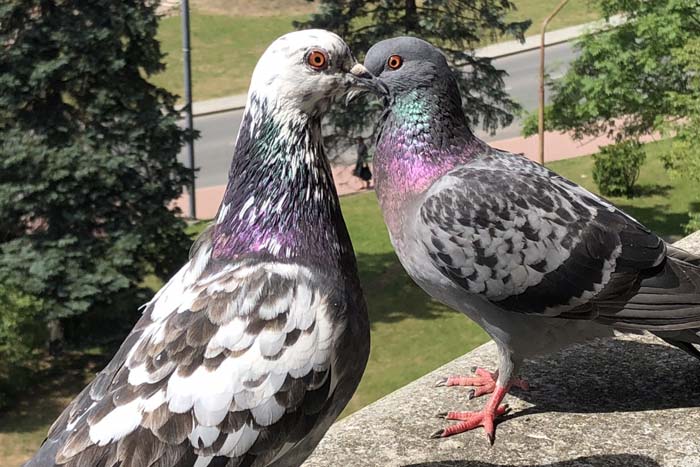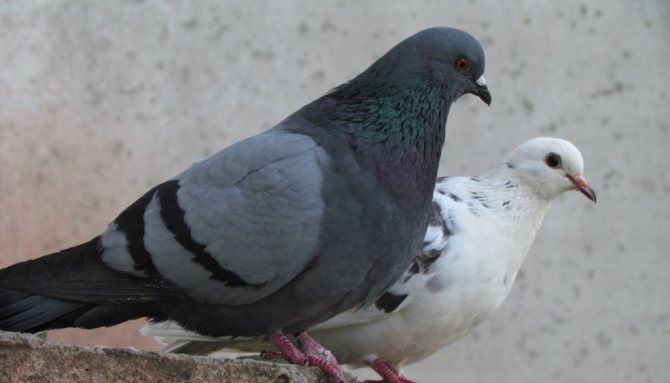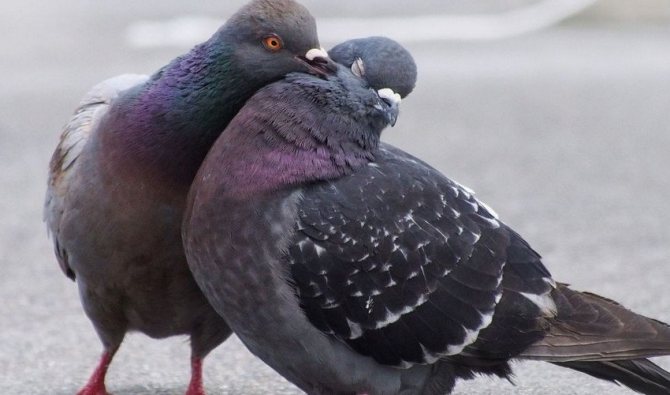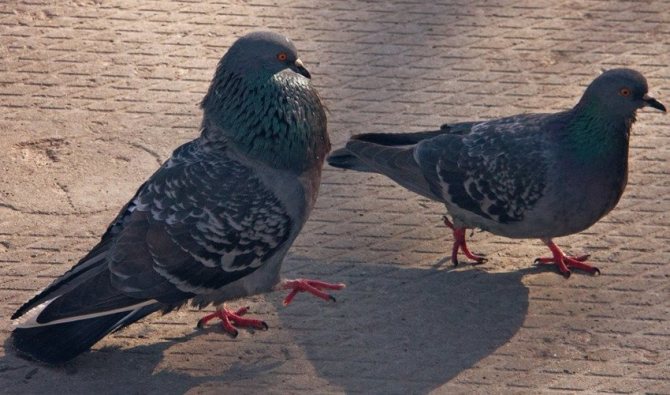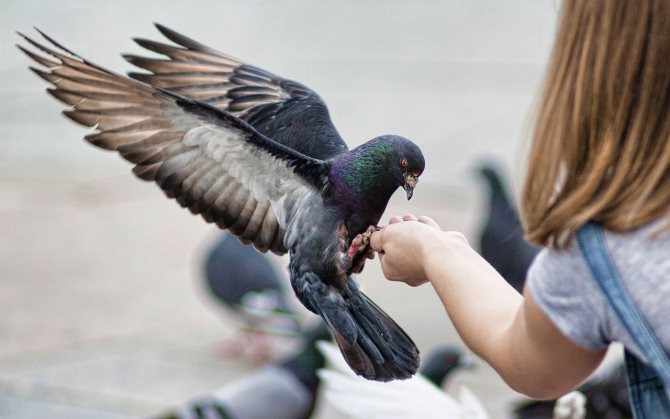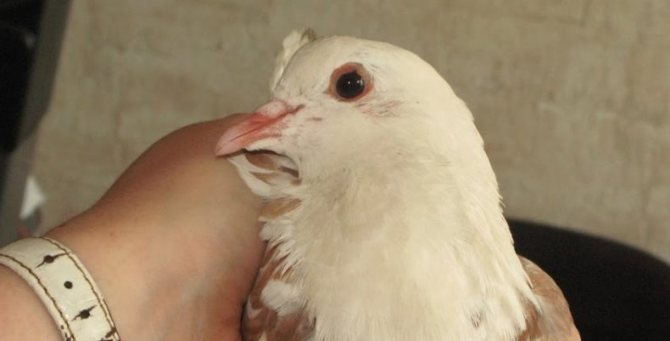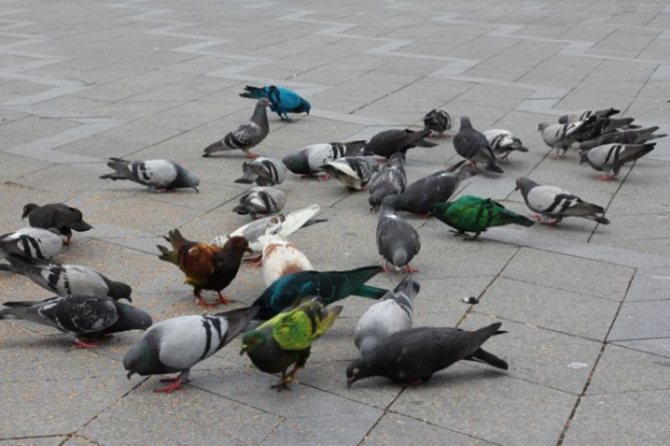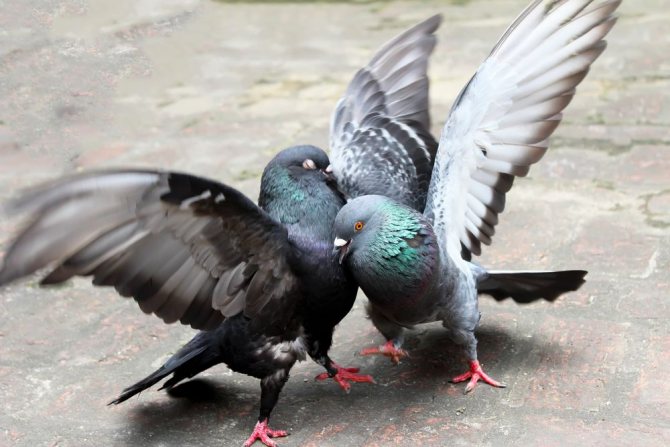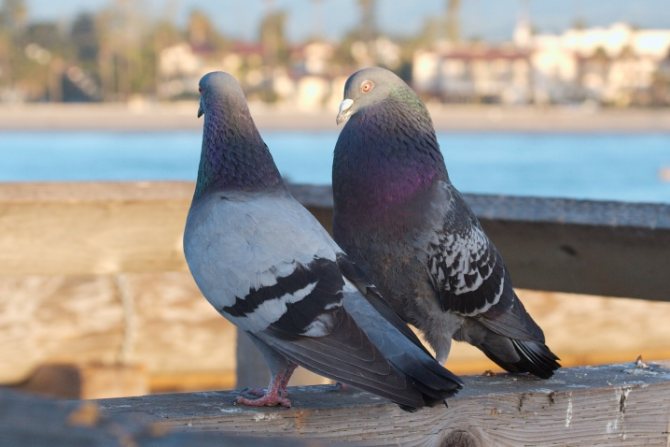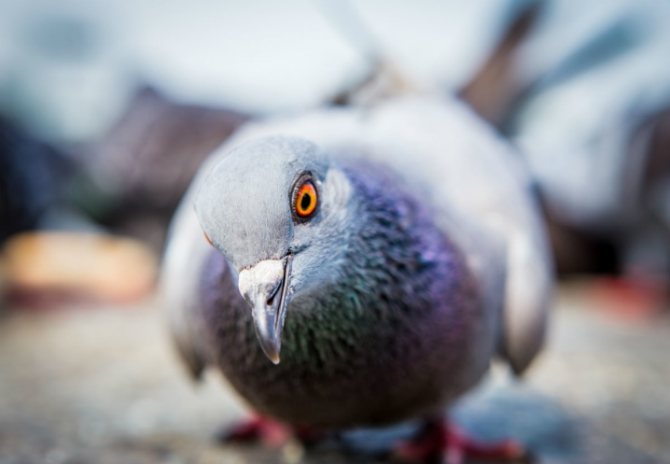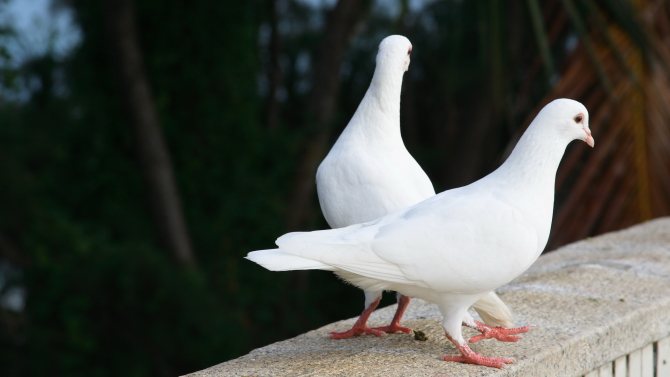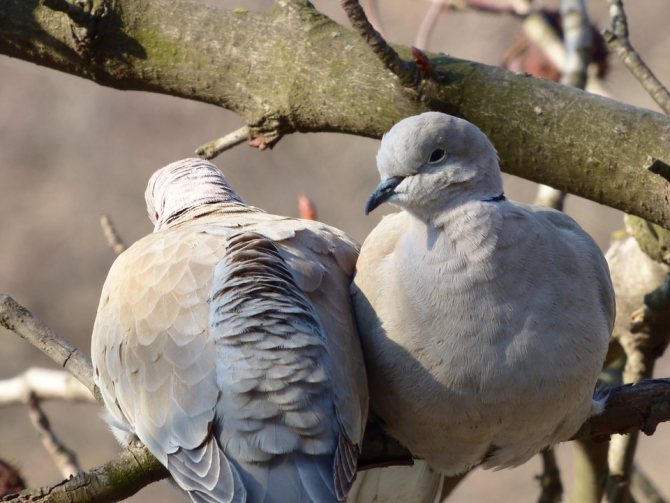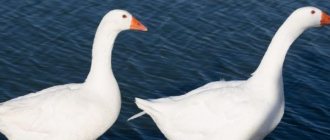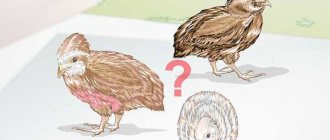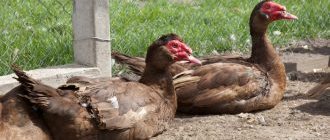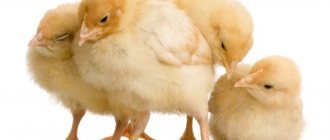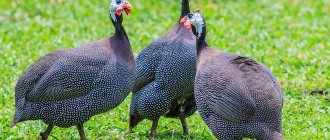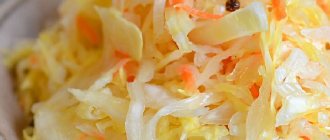Poultry »Pigeons
0
1263
Article rating
There are a number of reasons that require a breeder to be knowledgeable in determining the sex of his pigeons. With knowledge in this area, you can accurately keep flock records and have a clear idea of the reproductive abilities of pets. There are a lot of methods, the application of which makes it possible to cope with this task. Thanks to them, any owner of such birds will be able to learn how to distinguish a pigeon from a dove.
How to tell a pigeon from a dove
How to tell the difference between a dove and a dove
Domestic birds are different from wild birds. Some of the natural signs of sex have been lost or changed. Although in some breeds, the difference between males and doves is easier to notice.
Beak and head
"Boys" and "girls" are distinguished by their appearance and behavior. Great importance is attached to the head and beak. First they pay attention to their appearance, then they look at their behavior.
Male pigeons are distinguished as follows:
- the forehead is higher;
- the neck is shorter and stronger:
- the head is larger;
- the beak and wax (where the nostrils are) are coarser and thicker.
Doves have a different head and beak:
- The eyes are slightly larger and protruding. Some people think they are more expressive.
- The head and beak are neater - smaller, thinner.
- The neck is slightly longer in relation to the body.
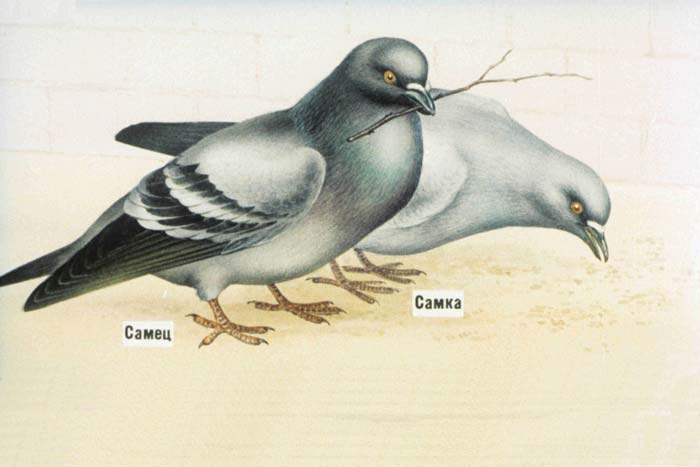
By color
The plumage of pigeons is different: from bluish to cherry, black. The color of females in nature is modest:
- dark, aspiring to black;
- uniform gray.
Doves need to raise chicks, protect them from predators, so females are often inconspicuous. The task of males is to attract the attention of the opposite sex, so their color is lighter and brighter.
In domestic pigeons, these features are often retained. Males look smart:
- The coloration is more intense, especially on the neck. There is also a metallic sheen.
- There are patterns on the tail, wings, chest.
The breed brings its own characteristics:
- Some decorative pigeons cannot be distinguished by color. It is about the same.
- Other decorative breeds have only minor features in their plumage. For example, in tapered short-billed turmans, this is the color of the tail. Male pigeons are distinguished by a wider white stripe. Check when the bird spreads its tail.
- There are breeds where it is convenient to distinguish males from females by plumage color. For example, an adult male Texan is white or yellowish with brown spots. Doves of this meat breed have dark plumage, combining shades of brown, gray, bluish, lilac.
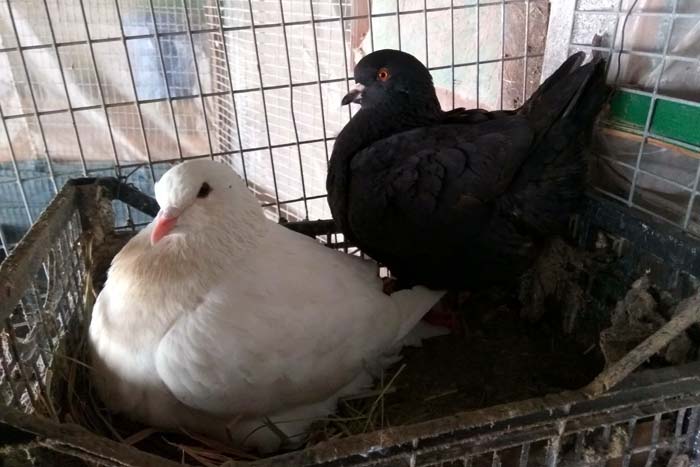

By bird size
If the male is healthy, he is usually larger than the dove:
- stronger, massive body;
- noticeably heavier;
- legs are longer.
Although this is only a general rule. For some decorative breeds, everything is different:
- males sometimes look more fragile, doves look larger;
- the size is about the same.
Breeds are large, medium, small. For comparison, only representatives from one "weight category" are taken. For example, the Astrakhan breed is larger than the Permian hryvnia. Therefore, it is correct to compare birds within a breed line.
Size is influenced by age. Young to measure sometimes simply do not have time to grow up.
Due to the large number of caveats, this method of sex determination cannot be considered accurate.
By the structure of the pelvis
Experienced breeders determine the sex of a pigeon by its body structure.Females, as a rule, are slim. Juveniles are more graceful than older birds.
Special attention is paid to the pelvic bones. For examination, the pigeon is taken in hands, stroked. In the area of the tail, two small bones of the pelvis are felt. In the male, they fit tightly to one another. In pigeons, the distance between them is 0.5–3 cm. This sign is best seen in birds that have already laid eggs. In immature individuals and chicks, the structure is similar to that of males - the bones fit tightly, there is no gap.
On examination, you can distinguish between a male and a female by one more feature:
- male pigeons usually clench their paws;
- females remain calm, almost do not react.
The method is considered quite accurate. However, it does not work with calcium deficiency, as well as after bone diseases such as rickets. In such cases, they are distinguished by other characteristics. It is undesirable to take sick individuals for breeding. The offspring have diseases, disorders.
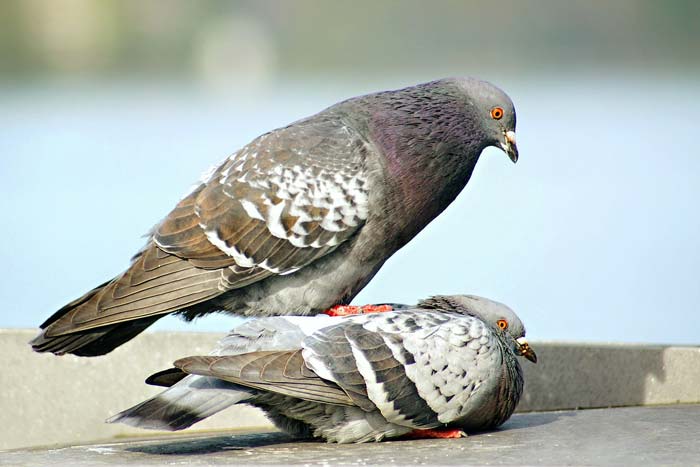

By voice
Experienced people recognize the sex of birds even by the way they coo. They are distinguished as follows:
- Male pigeons make clearer, sharper, louder sounds. The voice is rough and insistent. Loud "talking" increases the chance of scaring off competitors.
- In females, the voice is deeper, softer, quiet. They seem to be "bursting" or talking in French.
But this method is not ideal either: some females have a coarser voice, so few people can correctly distinguish birds by this sign. Different people interpret the same sounds in their own way.
Signs of age
A good pigeon breeder takes into account the age of the pets in his work.
A dove at home can live up to 15-20 years. Its appearance, breeding value, flying qualities change with age. Individuals of decorative breeds reach their peak form by the age of three and retain it up to five or seven. Then the tone weakens, and by the age of ten they are no longer suitable for producing offspring.
Flight pigeons flourish in the second year of life and show their best results within three to four years.
This age is also the best time for the reproduction of healthy chicks, future beauties and champions.
As can be seen from this information, it is possible to determine age based on known characteristics only approximately. Accuracy is possible only in the case of a ring on the foot, where the date of birth of the bird is indicated. However, in order to get your bearings, it will not be superfluous to get acquainted with the article "Plumage of a pigeon and molt", which describes in detail all the periods of feather formation in representatives of the pigeon family.
Differences in behavior
They recognize gender not only by external signs. Observation of behavior is a good help. As a rule, these are auxiliary signs. Although this is enough for someone.
Character
Among the pigeons there are brawlers. Even in a calm atmosphere, some find a reason for a fight, loud screams. Male pigeons arrange brawls. So they try to get territory or a female. In a cramped cage, conflict is almost inevitable.
The "boys" are not always distinguished by their absurd character. Some opponents do not join the fight. Doves sometimes also behave aggressively: they drive out annoying suitors. Females almost do not conflict with each other.
The character depends not only on the specific bird, but also on the breed. In a stressful situation, behavior changes. This happens, for example, when selling on the market.
Mating season habits
It is easier to distinguish between birds during the breeding season. Male pigeons become more energetic. They attract the attention of females in all available ways. Pigeons protrude, inflate their goiter. It looks much larger. Be sure to spread their tail and arrange fights among themselves.
The males follow the females relentlessly, making an impression all the time. The back is straight. Sometimes females have to flee. When the pigeons have created a pair, the head of the family spreads his wing, hugs the soul mate. Birds "kiss" with their beaks.
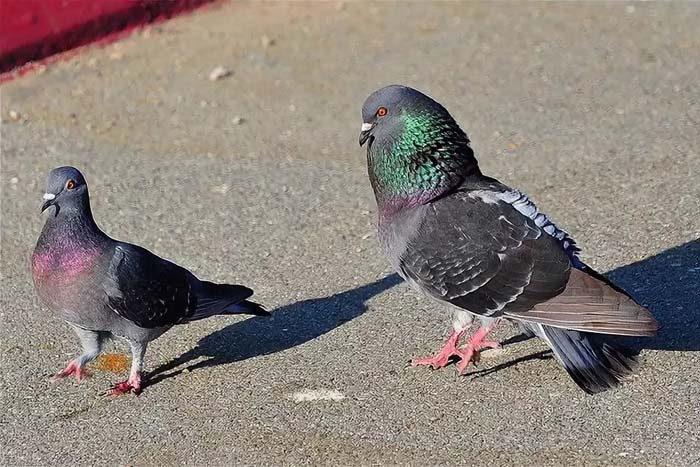

Doves behave almost as always: quiet and modest. Only to other females, the attitude is no longer so tolerant. Fighting for territory. Although, as a rule, there are no fights. The rival is being pushed out.
If you like the partner, the dove crouches on its tail, moves in a special way ("dances"), bows, pushes feathers on the tail. Both coo all the time. Pigeons are usually constant in relationships. A female who already has a mate can chase the rest away.
Attitude towards a person
Distinguish gender and reaction to people. You can do the following:
- Stretch out a palm. The male pigeon is unhappy: it turns its head away or pecks. He perceives the gesture as aggression. The behavior of females is much calmer. They do not dodge and even allow themselves to be stroked.
- Old-school pigeon breeders differ in their own way: pull the bird a little by the beak. Male pigeons in such a situation get nervous: they break free, dodge. Females remain calm. But the test is not always accurate, since it is impossible to predict the behavior and reaction of a particular bird.
Many indoor decorative pigeons love their owners. They fly to the person and obey. In this case, this method will be of little information.
Folk ways
It is believed that birds were domesticated 5-10 thousand years ago. During this time, many popular methods of sex determination have appeared. With their help, pigeons are distinguished today.
The easiest way is to test the reaction to contact with a person. Take the subject in the hand and stroke the breast. Male pigeons are distinguished by their tucked-in paws. Their girlfriends don't.
Planting birds in one cage
They watch the reaction of the pigeon to their own or the opposite sex. To make it more noticeable, they limit the space: they put two birds in a cage. Then the following happens:
- Male pigeons do not get along well. They start fighting for leadership.
- Two doves behave peacefully.
- When a couple is in the cage, courtship begins.
The method is not very precise. There are different characters. Plus, the doves sometimes refuse the gentleman. From the outside, this can be mistaken for a fight between two rivals.
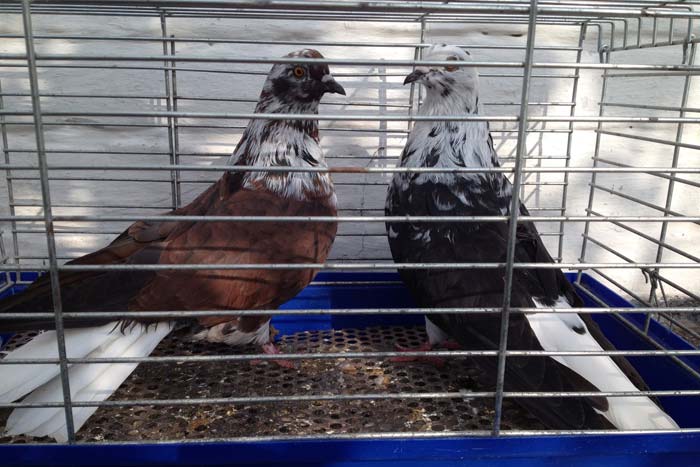

Using a pendulum
Another popular method is loved by beginners. It is believed to be nearly 100% accurate. Use a bronze, copper or brass pendulum:
- A small piece of one of these metals is tied to a thread, a thin rope. You can take a coin with a hole. The length of the thread is from the elbow of the owner to the fingers. It turns out a pendulum.
- Take a dove in one hand.
- The pendulum is placed over the genitals, the coccyx of the subject.
- Look for the peculiarities of the movement. If the pendulum swings from one side to the other, a male is on examination. When the device spins in a circle, the dove passes the test.
In a similar way, they sometimes look for water or pathogenic zones. The method has no scientific justification. Professional pigeon breeders tend to criticize this method.
The dove sat on the window - a good omen
Almost only positive signs are associated with such feathered friends. If the bird "settled" on the windowsill, regularly appears there, troubles will be bypassed for a long time. Luck will smile, harmony will come to the house.
If the pigeon just flew in and sat on the windowsill (possibly knocked on the glass and flew away), this indicates that important news has been received. It's safe to say they will be positive. If there was a twig in the beak, this speaks of good news from loved ones. This sign is also relevant for birds that sat on the cornice, balcony or roof of the house.
Our ancestors believed that birds do not fly to evil bad people.
- The white dove decided to fly around the house, and then sit on the window - a very good sign. If a bird regularly flies to the windowsill like this, people living in this house will not have any trouble. The calmer the pigeon behaves, the more favorable events await in the future.
- The pigeon sat down on the windowsill and tries to attract attention (not aggressively, it is clear that he is not scared, he just wants to get in touch), this suggests that the cherished desire will come true. Perhaps a child will be born, get a new position, win the lottery.
- He walks around the windowsill, dancing - guests will soon come.
The appearance of two pigeons is always associated with something good: love, tenderness and care. If you believe the signs of love, a meeting of such a couple indicates:
- meeting a person with whom you can build your destiny;
- improving relationships in a couple;
- strengthening the family hearth.
The birds were met by a pair of lovers (husband and wife) - indicates replenishment, the appearance of offspring. In order for the energy of love to be transferred from the birds to you, it is advisable to feed them.
Pay attention to how the doves behave. If they just coo, look after each other, ruffle - this indicates a happy change in life.


If they fight among themselves, this indicates a difficult family life.
How to determine the sex of chicks
Explicit signs of sex appear after maturation. In chicks, it is more difficult to determine the sex: outwardly, they look almost the same, behave similarly, the voice or the structure of the pelvis also do not differ.
Although there are still some signs:
- Male pigeons are distinguished by their larger head.
- The beak of the "boys" is noticeably wider and heavier.
- Male pigeons are often slightly larger. Although this feature is found only by careful observers, it does not always work. At first glance, the chicks are about the same.
Sometimes the breed helps a lot. For example, they quickly recognize the gender of texans:
- Newborn males have short or none at all down. In little doves, it is long, yellowish.
- At about the age of two days, spots are noticeable on the beak of the females: pinkish or brown. The "boys" do not have this - the beak is light, of the same color.
- If the parents are known, then the task is easier. Chicks are distinguished by color. For example, the father is yellow. Then sons too. If the mother was reddish, chicks of the same color - only females.
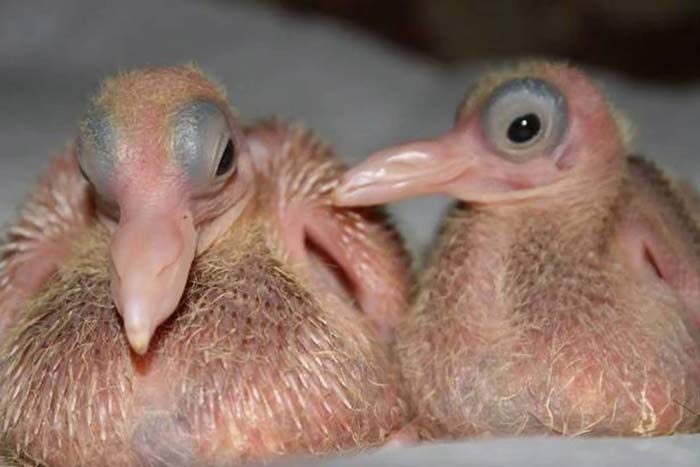

Comparison table for practical use
Pigeons often have difficulties in sex determination, especially for beginners. Even if the methods are applied correctly, errors or doubts appear. Each of the methods has disadvantages. There are contradictions.
Pigeon breeders found a way out. They distinguish pigeons not by one, but by several signs at the same time. For this, a special table has been developed, which contains the main checked signs.
In the table below you can check and compare the appearance, behavior of the doves and their partners. This "cheat sheet" helps you not to forget anything. For example, several pigeons keep together calmly. It is assumed that these are females. Then they check for other signs: the color of the plumage, the shape of the head, and so on.
| Sign | Dove | Dove |
| Size, build | Massive body, overall length and other dimensions are larger | Smaller dimensions, miniature body structure |
| Feather color | Blotches that differ from the main color, patterns on the body, bright overflows of green, burgundy and blue colors on the neck | Solid color, no glitter or abrupt transitions |
| Head | The head with a pronounced frontal part sits on a wide neck. The beak and beak are massive, well developed. The eyes are large, slightly protruding | Rounded, sitting on a thin neck. There are no bumps or bumps on the head. Small wax and beak. Expressive eyes |
| Vote | Loud, in stressful situations, the rumble becomes aggressive | Melodic quiet cooing reminiscent of burr |
| Interacting with your gender | Frequent conflicts over attempts to establish leadership. Fights to eliminate a competitor | Friendly coexistence |
| Interaction with the opposite sex | The pigeon "looks after" the female it likes: cooes, performs a mating dance, ruffles its feathers. Embraces the dove | With mutual sympathy, she dances, coos and sits on her tail. The female can be aggressive towards a pigeon that does not like it. |
Summary
Knowing how to distinguish a pigeon from a dove is, first of all, necessary for those who are engaged in breeding them. This will allow breeders to consider flock and reproductive performance. Each method, having certain disadvantages, can show only an approximate degree of probability, therefore, for maximum confidence, it is recommended to use the totality of the results of each of the methods.
Tags: dove, pigeon, can be distinguished
About
«Previous post
Useful Tips
Recommendations to help you distinguish the pigeon correctly from their partners:
- They use several proven methods.
- They understand that even 2-3 methods sometimes lead to errors. Don't hope fully analyze. Take into account the breed, age, etc.
- Birds sometimes behave in an unusual way. For example, doves are overly active, and males are hesitant. The reasons most often lie in hormonal disorders. In addition, conditions and health conditions are affected. Less commonly, these are features of a particular bird, character.
When breeding, it is necessary to determine the sex, as this is necessary to obtain pairs. Individuals with health disorders, for example, hormonal, are "taken on a pencil." Then they are treated or not allowed to reproduce.
Distinguishing a dove from a male can be difficult for a beginner. However, after training, this works out in most cases. For a more accurate gender determination, you need to check at least 2-3 signs.
Pair formation
There are two ways to make pigeon pairs:
- natural;
- forced.
The first option assumes that the birds choose each other themselves, the second method takes place under human control, for example, to form a new breed.
If couples were formed naturally, then they will be distinguished by the strength of the relationship, good reproduction and fidelity. Forced union can cause aggressive behavior in males, their inattention to the other half. After the breeding period, couples most often break up.


